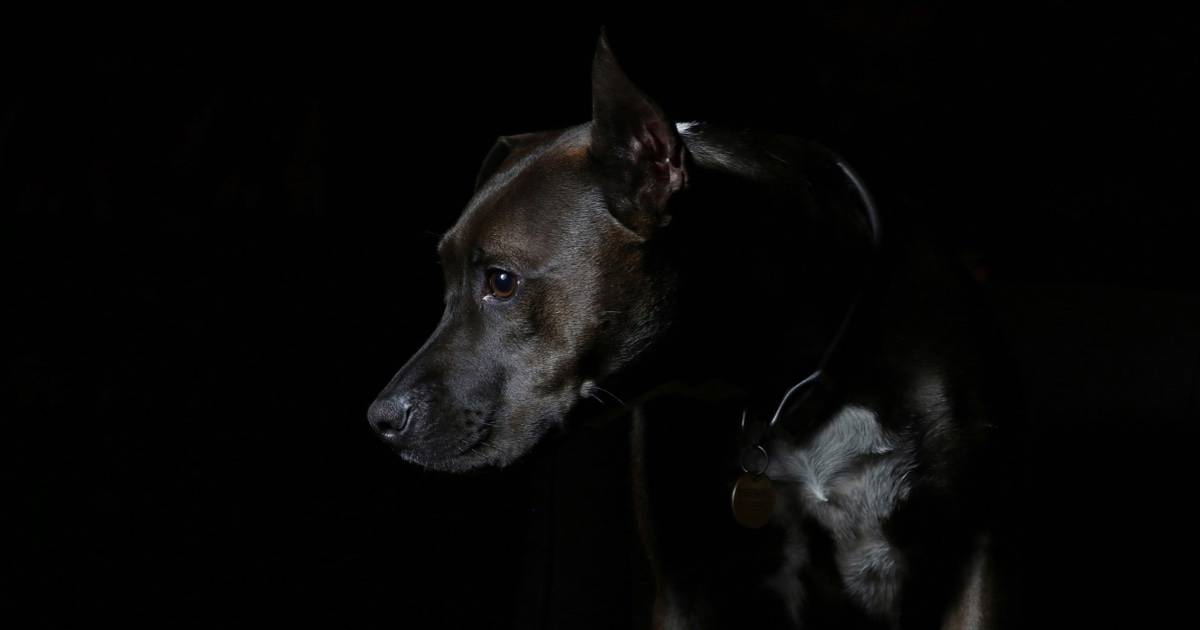As a short-sighted person, I don’t take good vision for granted. Therefore, when someone asks me “what exactly do dog see?”, I’m interested in a lot more than just colour vision.
In this article you will find the best evidence we have for:
- colour perception,
- ability to see detail,
- light sensitivity, and
- long and short-sightedness
And before I go on let me say that I’m also very interested in cats; I just wish there was more information. However, my feeling is that what’s true for canines will also be true for our feline companions.
Let’s dive in!
Dog Colour Vision
Dogs see colour. Don’t let anyone tell you otherwise. It’s just that their perception of a colour won’t be the same as ours.
The retina of a dog’s eye contains short-wave (blue) and long-wave (red) photoreceptors, but not the medium-wave (green) ones also found in humans. For any given wavelength of light, what dogs see will depend on how the brain processes the two signals.
For example, we know that dogs can discriminate between all three primary colors and grey. Where they are likely to differ is in complex or nuanced colours, which they probably won’t pick out as clearly as we do.
Does it matter? Almost certainly not. In the everyday ways dogs use their vision, there’s probably no difference between us and them.
Dog Visual Acuity
Where humans do have a clear edge is in our ability to pick out details. It’s thought that dog vision sacrifices fine detail for the ability to see better in low light.
Studies don’t completely agree, but humans are thought to perceive detail around two to four times better. This means that you should be able to recognise a face at two to four times the distance that a dog can.
Before you get too cocky, don’t forget that dogs have remarkably better hearing and smell. This is probably why they still seem to recognise individuals at greater distances than us.
Light Sensitivity
While humans do better in good lighting, dogs have it all over us as soon as the light intensity fades. The main reason for this is that the central part of their retina contains many more light photoreceptors and fewer colour ones.
The second reason dogs see better in low light is the reflective layer you can see at night or in flash photos. It’s called the tapetum lucidum (“shining carpet”) and it functions as a natural mirror in the eye.
When light strikes the retina, the part that isn’t absorbed gets bounced back through for a second pass. The reflected light will be just a little scattered, hence a loss in detail.
Higher light sensitivity might explain why dogs are much more affected by ‘photo bleaching’ than us. Dog owners should be aware that dogs going from a bright to a dim environment will take twice as long as us to adjust.
Dog Vision Defects
Have you ever wondered whether dogs experience long and shortsightedness like people do? Well the answer is, yes, and it’s very much dependent on the breed.
I can do no better than present this table from an excellent recent study. To give perspective, my myopia of -3 dioptres means I can’t recognise a face over 5 metres away.
Prevalence Of Long & Short-Sightedness In Dogs
| Breed | % Affected | Avg Diopter* |
| Toy Poodle | 76.6 | -2.62 |
| Australian Shepherd | 63.4 | +2.24 |
| Alaskan Malamute | 60.7 | +1.48 |
| Bouviers des Flandres | 59.2 | +1.19 |
| Collie | 54.0 | -2.34 |
| Rottweiler | 43.5 | -2.7 |
| Miniature Schnauzer | 40.5 | -1.41 |
| German Shepherd | 24.4 | -1.6 |
| Labrador | 22.1 | -1.48 |
| English Springer Spaniel | 21.7 | -1.32 |
Stunning, isn’t it? I would be very interested to know if these dogs are less trainable or more anxious as a result. It changes how we think about certain dog breeds.
And that in fact is a larger point to consider. Dog vision has probably evolved in different breeds differently. Sight hounds like greyhounds probably do have good vision, whereas toy and small breeds need it less. And within the same breed, dogs from working lines are likely to have better vision than those from show lines.
Understanding both the abilities of dogs to see, and the possibility that some might not see well can only help us relate to them better. There is so much still to know.
Related: How Dogs Hear Human Speech
Have something to add? Comments (if open) will appear within 24 hours.
By Andrew Spanner BVSc(Hons) MVetStud, a vet in Adelaide, Australia. Meet his team here.
References
Byosiere, S. E., Chouinard, P. A., Howell, T. J., & Bennett, P. C. (2018). What do dogs (Canis familiaris) see? A review of vision in dogs and implications for cognition research. Psychonomic bulletin & review, 25(5), 1798-1813
Kubai, M. A., Bentley, E., Miller, P. E., Mutti, D. O., & Murphy, C. J. (2008). Refractive states of eyes and association between ametropia and breed in dogs. American journal of veterinary research, 69(7), 946-951

